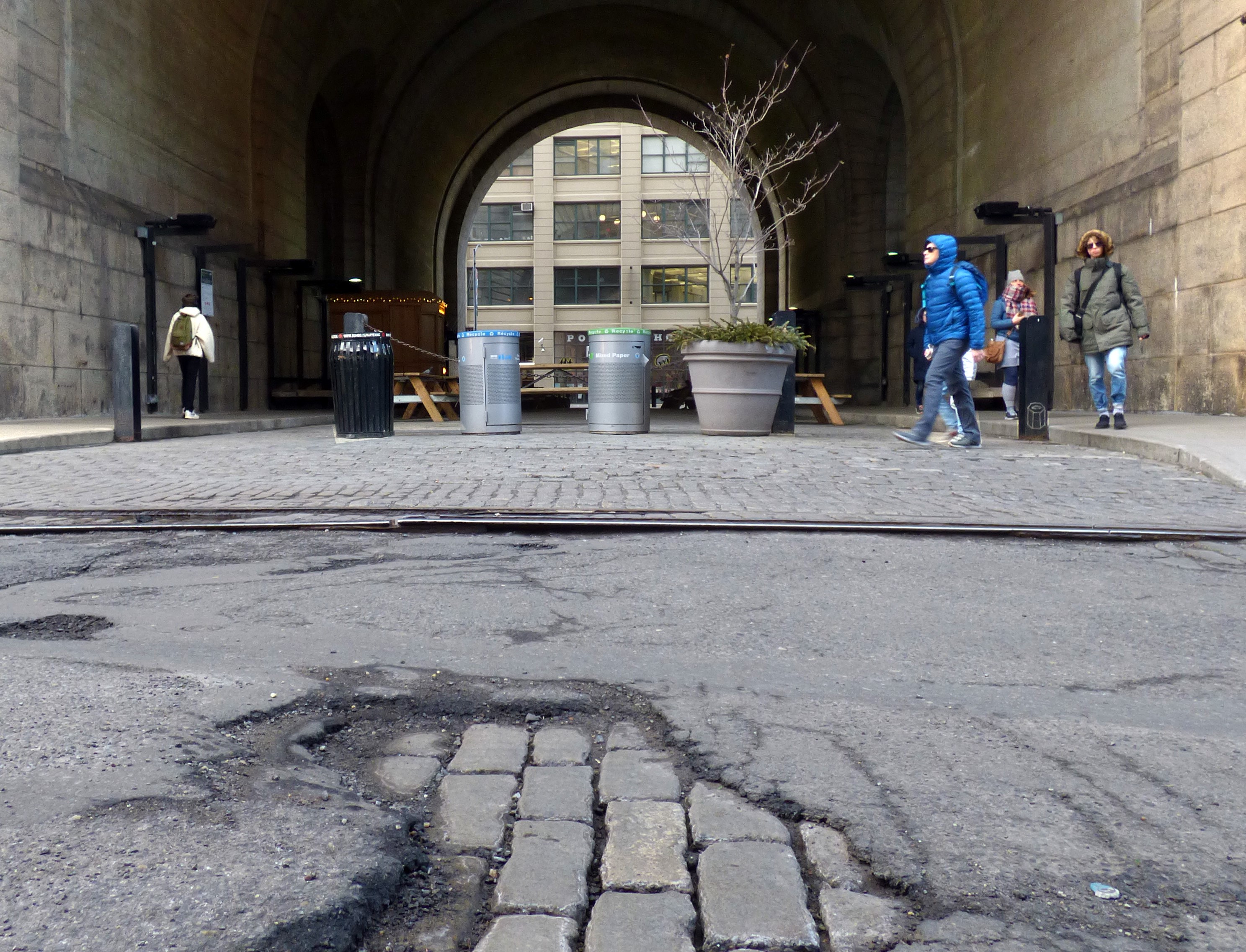Are DUMBO’s historic ‘cobblestone’ streets disappearing?

The hand-cut Belgian block paving DUMBO’s historic streets — often mistakenly called cobblestones — are disappearing, either patched over with asphalt or dug up by utility contractors and carted away.
Preservationists say the block is an essential part of the identity of the neighborhood. The old-fashioned streets provide the scenic backdrops for hundreds of films and attract thousands of tourists. But they have deteriorated even more since DUMBO was designated as historic by the Landmark Preservation Commission in 2007.
The city says that any blocks removed by contractors are being stored at New York Paving’s warehouse, and will be replaced during the upcoming Phase 2/3 of the DUMBO/Vinegar Hill Street and Plaza Reconstruction project, a massive, four-year undertaking that will replace water and sewer lines from Main Street to Jay Street and from Front Street to Water Street.
